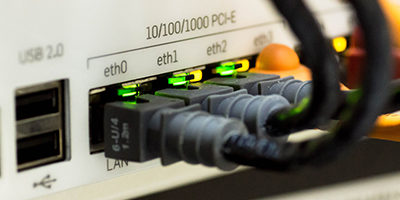%
Jubak’s Picks Performance 1997-2019
Jubak’s Picks
Buy and hold? Not really.
Short-term trading?
Not by a long shot.
So what is the stock-picking style of The Jubak’s Picks portfolio?
Click to expand...
Click to View the Jubak’s Picks Portfolio
I try to go with the market’s momentum when the trend is strong and the risk isn’t too high, and I go against the herd when the bulls have turned piggy and the bears have lost all perspective. What are the results of this moderately active — the holding period is 12 to 18 months — all-stock portfolio since inception in May 1997? A total return of 584% as of December 31, 2019. That compares to a total return on the S&P 500 stock index of 335% during the same period.
%
Top 50 Stocks Performance 2019
Top 50 Stocks
This long-term, buy-and-holdish portfolio was originally based on my 2008 book The Jubak Picks.
Trends that are strong enough, global enough, and long-lasting enough to surpass stock market averages.
Click to expand...
Click to view the Top 50 Stocks Portfolio
In The Jubak’s Picks Portfolio I identified ten trends that were strong enough, global enough, and long-lasting enough to give anyone who invested in them a good chance of beating the stock market averages.
To mark the publication of my new book on volatility, Juggling with Knives, and to bring the existing long-term picks portfolio into line with what I learned in writing that book and my best new ideas on how to invest for the long-term in a period of high volatility, I’m completely overhauling the existing Top 50 Picks portfolio.
You can buy Juggling with Knives at bit.ly/jugglingwithknives
%
Dividend Income Performance 2021
Dividend Income
Every income investor needs a healthy dose of dividend stocks.
Why bother?
Why not just concentrate on bonds or CDs?
Click to expand...
Click to view the Dividend Income Portfolio
Because all the different income-producing assets available to income investors have characteristics that make them suited to one market and not another. You need all of these types of assets if you’re going to generate maximum income with minimum risk as the market twists and turns.
For example: bonds are great when interest rates are falling. Buy early in that kind of market and you can just sit back and collect that initial high yield as well as the capital gains that are generated as the bonds appreciate in price with each drop in interest rates.
CDs, on the other hand, are a great way to lock in a yield with almost absolute safety when you’d like to avoid the risk of having to reinvest in an uncertain market or when interest rates are crashing.
Dividend stocks have one very special characteristic that sets them apart from bonds and CDs: companies raise dividends over time. Some companies raise them significantly from one quarter or year to the next. That makes a dividend-paying stock one of the best sources of income when interest rates start to rise.
Bonds will get killed in that environment because bond prices will fall so that yields on existing bonds keep pace with rising interest rates.
But because interest rates usually go up during periods when the economy is cooking, there’s a very good chance that the company you own will be seeing rising profits. And that it will raise its dividend payout to share some of that with shareholders.
With a dividend stock you’ve got a chance that the yield you’re collecting will keep up with rising market interest rates.
But wouldn’t ya know it?
Just when dividend investing is getting to be more important—becoming in my opinion the key stock market strategy for the current market environment—it’s also getting to be more difficult to execute with shifting tax rates and special dividends distorting the reported yield on many stocks.
I think there’s really only one real choice—investors have to pull up their socks and work even harder at their dividend investing strategy. That’s why I revamped the format of the Dividend Income portfolio that I’ve been running since October 2009. The changes aren’t to the basic strategy. That’s worked well, I think, and I’ll give you some numbers later on so you can judge for yourself. No, the changes are designed to do two things: First, to let you and me track the performance of the portfolio more comprehensively and more easily compare it to the performance turned in by other strategies, and second, to generate a bigger and more frequent roster of dividend picks so that readers, especially readers who suddenly have a need to put more money to work in a dividend strategy, have more dividend choices to work with.
Why is dividend investing so important in this environment? I’ve laid out the reasons elsewhere but let me recapitulate here. Volatility will create repeated opportunities to capture yields of 5%–the “new normal” and “paranormal” target rate of return–or more as stock prices fall in the latest panic. By using that 5% dividend yield as a target for buys (and sells) dividend investors will avoid the worst of buying high (yields won’t justify the buy) and selling low (yields will argue that this is a time to buy.) And unlike bond payouts, which are fixed by coupon, stock dividends can rise with time, giving investors some protection against inflation.
The challenge in dividend investing during this period is using dividend yield as a guide to buying and selling without becoming totally and exclusively focused on yield. What continues to matter most is total return. A 5% yield can get wiped out very easily by a relatively small drop in share price.
Going forward, I will continue to report on the cash thrown off by the portfolio—since I recognize that many investors are looking for ways to increase their current cash incomes. But I’m also going to report the total return on the portfolio—so you can compare this performance to other alternatives—and I’m going to assume that an investor will reinvest the cash from these dividend stocks back into other dividend stocks. That will give the portfolio—and investors who follow it—the advantage of compounding over time, one of the biggest strengths in any dividend income strategy.
What are some of the numbers on this portfolio? $29,477 in dividends received from October 2009 through December 31, 2013. On the original $100,000 investment in October 2009 that comes to a 29.5% payout on that initial investment over a period of 39 months. That’s a compound annual growth rate of 8.27%.
And since we care about total return, how about capital gains or losses from the portfolio? The total equity price value of the portfolio came to $119,958 on December 31, 2012. That’s a gain of $19,958 over 39 months on that initial $100,000 investment or a compound annual growth rate of 5.76%.
The total return on the portfolio for that period comes to $49,435 or a compound annual growth rate of 13.2%.
How does that compare to the total return on the Standard & Poor’s 500 Stock Index for that 39-month period? In that period $100,000 invested in the S&P 500 would have grown to $141,468 with price appreciation and dividends included.) That’s a total compounded annual rate of return of 11.26%.
That’s an annual 2 percentage point advantage to my Dividend Income portfolio. That’s significant, I’d argue, in the context of a low risk strategy.
Portfolio Related Posts
Selling Salesforce out of my Jubak Picks Portfolio as shares hit target price
Salesforce (CRM) has hit my $185 a share target price. I’m selling it out of my Jubak Picks Portfolio with a 37.42% gain since I added that position back on November 1, 2018. Why sell rather than up the target price? A couple of four reasons for what amounts to taking a breather on these shares.
Selling Japanese yen ETF out of Jubak Picks Portfolio
A while back I sold the Invesco Currency Shares Japanese Yen ETF (FXY) out of my Perfect Five ETF Portfolio because I was looking for more diversification in that limited five ETF portfolio. (I replaced it with the iShares Large Cap China ETF (FXI) on April 20, 2020. That ETF is up 6.51% as of the June 25 close since that addition.) Tomorrow, Friday, June 26, I’m also selling that Yen ETF out of my Jubak Picks Portfolio.
Raising my target price on Incyte to $120 a share after 58.5% gain in last 3 months
I admit it. I feel silly talking about price targets and valuations in this market. After all everything is just going to the sky. Infinity and Beyond!!! But, as silly as I may feel, I don’t think the gods of investing have repealed the laws of valuation.
Jubak Picks member Visa to benefit from post-corona trends
Visa’s ads remind up that the credit card is everywhere you want to be. But that’s actually not true when it comes to payments below $10. In the United States 55% of payments below $10 are still in cash.
My Stock Pick of the Day: Xylem (XYL)
Xylem (XYL) is that rare coin on raw market–a pure play water stock at a time when foresighted investors are looking for water stocks and realizing how few of them exist. (The basic water story is that Mother Nature isn’t making more of it. Rising global populations need more of it. And human beings are doing a good job of polluting the supplies (when those supplies are actually near the people that need them) that do exist. Which makes water management a growth sector.)
Stock Pick of the Day: Barrick Gold (GOLD)
I can think of two reasons to buy shares of Barrick Gold (GOLD) now. Either one alone would be enough to justify a “buy.” First, sentiment is shifting among investors toward the idea of buying gold as protraction against currency depreciation.
Stock Pick of the Day: Taiwan Semiconductor (TSM)
Announcing a new feature–my stock pick of the day. With Taiwan Semiconductor as my first pick. The hoo ha at the end of last week over restrictions on the sale of U.S. semiconductors to China’s Huawei Technologies, high-lighted the central role that Taiwan Semiconductor Manufacturing (TSM) plays in the global technology sector. The stock jumped on news that the company would build a new foundry in Arizona on the assumption that the new plant would let the company avoid U.S. restrictions on technology sales. That assumption got a little shakier later in the day when officials at the Commerce Department clarified that the restrictions covered the sale of any chips to Huawei that had been manufactured using chip making equipment from U.S. companies such as Applied Materials (AMAT.) The sudden attention paid to Taiwan Semiconductor reminded every one that there are, for all intents and purposes only three chip manufacturers in the world, Intel (INTC), Samsung Electronics, and Taiwan Semiconductor.
Selling Illinois Tool Works out of my Dividend Portfolio to make room for new dividend strategy and new picks
My second sell of the day. Way back in November 2019–if you remember a period when projected earnings growth was strong and before the coronavirus recession–I argued for a dividend strategy that focused on companies with fast growing and solidly predictable earnings that were, in my opinion, likely to raise their dividends significantly over the next five years or more. It didn’t matter all that much, I argued, that these stocks didn’t pay a big yield now. Buy them now for the future dividend increases. And rather than focusing on the steady dividend growers in the S&P Dividend Aristocrats list, I added stocks like Visa (V) and Illinois Tool Works (ITW) because if their stronger projected earnings growth. Well, it’s a new world now.











